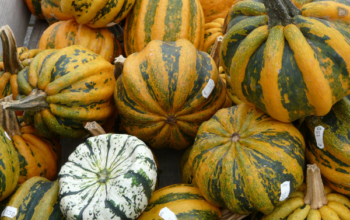Cardon épineux de Plainpalais (Cardoon) AOC: Origin and History
by Raymonde Schmirl
The Romans were already familiar with the cardoon. Originally, the cardoon was a wild plant that, thanks to horticultural selections by the Romans, became a refined vegetable. As a vegetable of high-ranking gastronomic value, “the cardoon crowns the fame of cordon-bleu cooks from around Lac Léman”!
The origin of the cardoon as well as that of artichoke has been the object of many differences of opinion between botanists. The most likely hypothesis is that they share a common ancestor, i.e. the wild cardoon, which is endemic to countries from around the Mediterranean Sea (South of France, Italy, Spain, Greece and North Africa).
In the XVIth century Huguenot growers, who came from southern France, brought the cardoon to our region. It was cultivated in Plainpalais; then, following the revocation of the Edict of Nantes in 1685, with the arrival of new Huguenot refugees, it was cultivated in the area between the rivers Arve and Rhône and at La Jonction. During those migrations, many new varieties and species of vegetables were introduced in Geneva such as leek Swiss chard, artichoke, and cabbage. Amongst the varieties of cardoon that were preserved, the “épineuse” (thorny) variety grown by Geneva market gardeners, the best, has been rewarded with the official designation of quality AOC (Controlled Denomination of Origin). During his time, Frédy Girardet, a three-star chef of the Restaurant de l’Hôtel de Ville in Crissier, associated cardoons with truffles.
In France the cardoon is cultivated mainly in the Lyon region; in Switzerland it is grown almost exclusively in Geneva. There are many ways of cooking this vegetable. In Geneva, the cardoon is the traditional feast at Christmas and the Escalade, equivalent to Canada Day for the local residents. Cooked either à la crème or au gratin, and served to accompany a roasted chicken. Perhaps, it would be more appropriate to write that it was the traditional Christmas meal until the end of the XXth Century. Culinary habits change thanks to migration from all over the world.
In Lyon, one appreciates cardoon with bone marrow, whereas in Italy one might prefer cardoon with anchovies. Fresh cardoon is sold whole, which means that the cook must first prepare the plant: peel it and get rid of the thorns. Already prepared and cut into sections and vacuum packed is also readily available. One finds it on the open-air markets from mid-November till mid-January. It is also available all year round preserved in jars.
Cardoon au Gratin Genevois
Per person, allow 400-500g of fresh cardoon (i.e. the whole plant before preparation) or 200/250g if they are already prepared (vacuum-packed).
- Method: if the whole fresh plant is being used, peel it, cut off the top and cut the ribs into sections of approximately 6cm. Immediately put the sections into water and milk in order to avoid oxidation.
- Cook the cardoon about 30 minutes in water and a little milk. Check the degree of tenderness, not too soft, with the tip of a knife. Drain, keeping a cup of cooking liquid to prepare the sauce (one can prepare the cardoon the day before and keep it in the fridge).
- Prepare a white sauce, using the reserved water and milk. Add grated cheese, salt, pepper and a little nutmeg. Put the cardoon into a buttered baking dish, cover with the white sauce and sprinkle with grated cheese. Cook for about 30 minutes in a heated oven at 200°C.
- Variant: Replace the white sauce with cream, sprinkle with grated cheese and cook as indicated above.
Sources: brochure edited by the Union Maraîchère de Genève (UMG); personal communication with a director from the UMG; “Chroniques gourmandes” by Maxime Pietri; different cookbooks and articles on cardoon.



